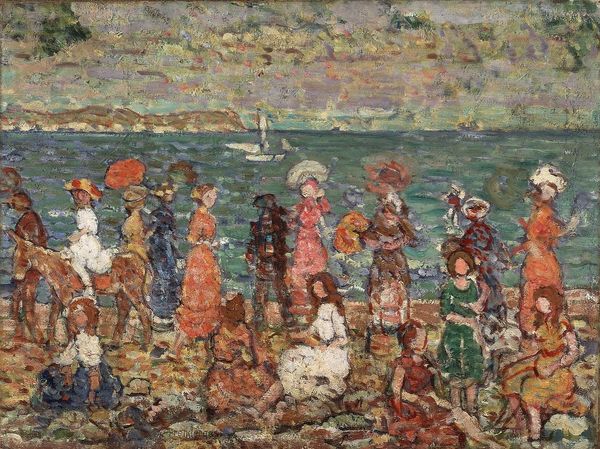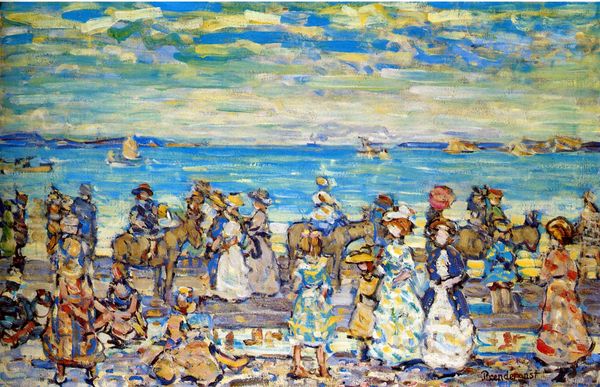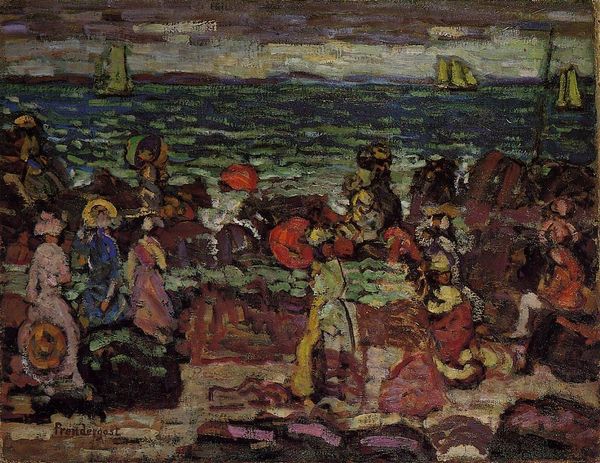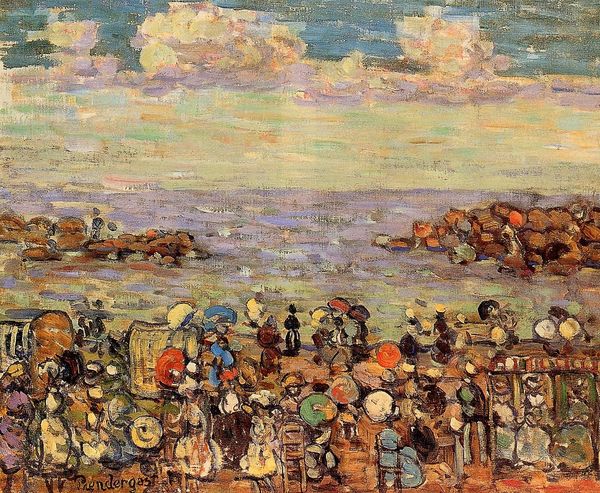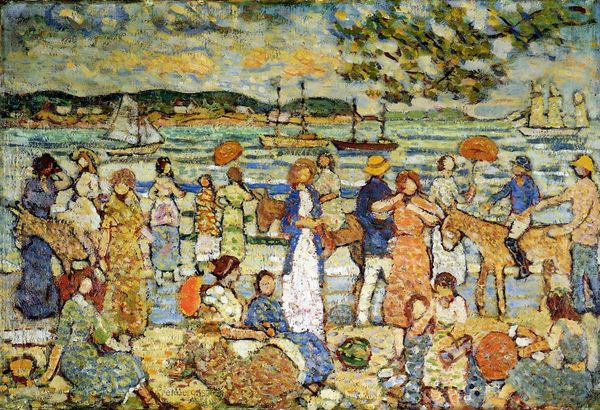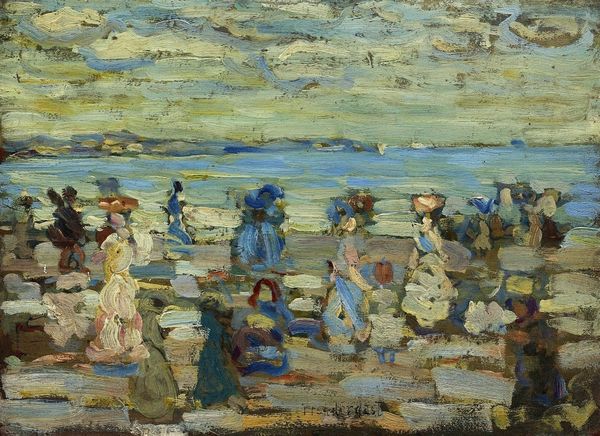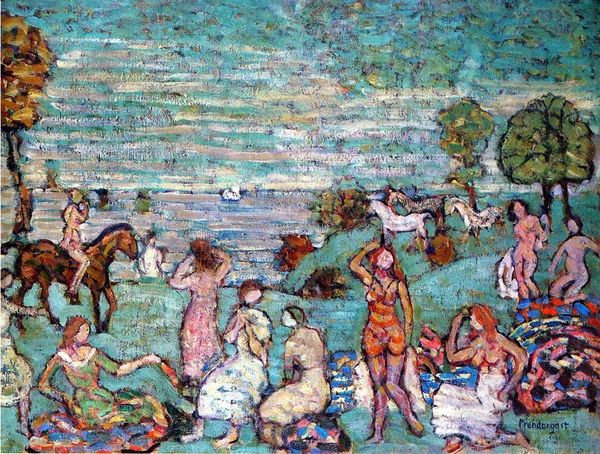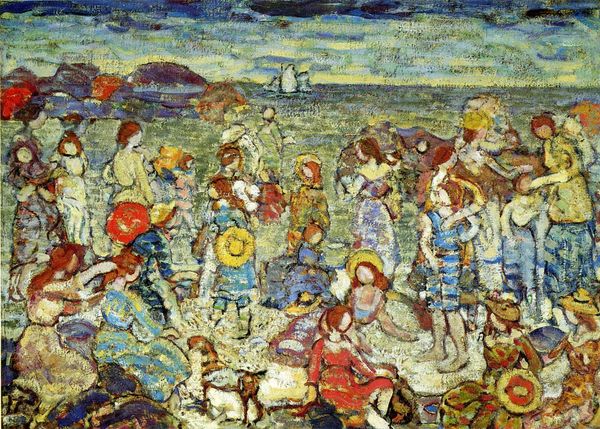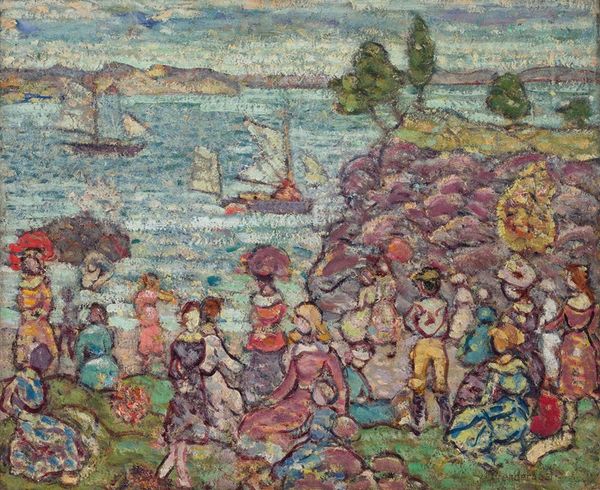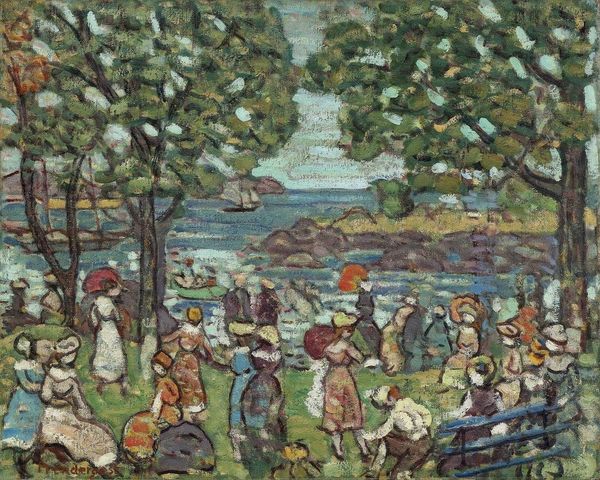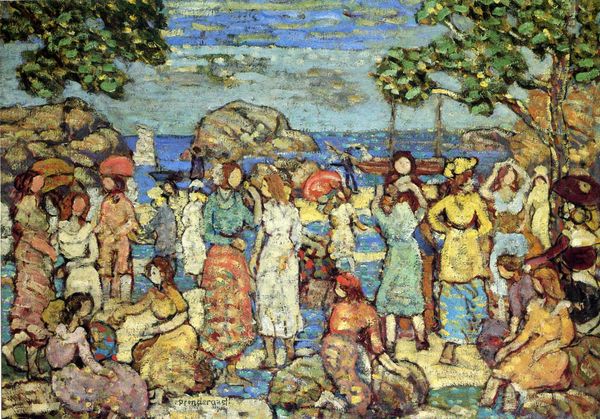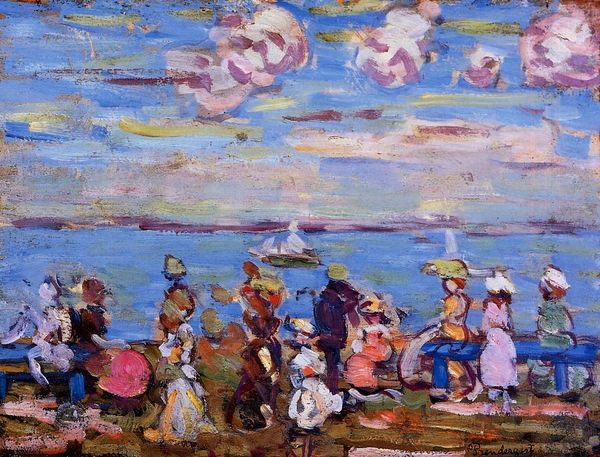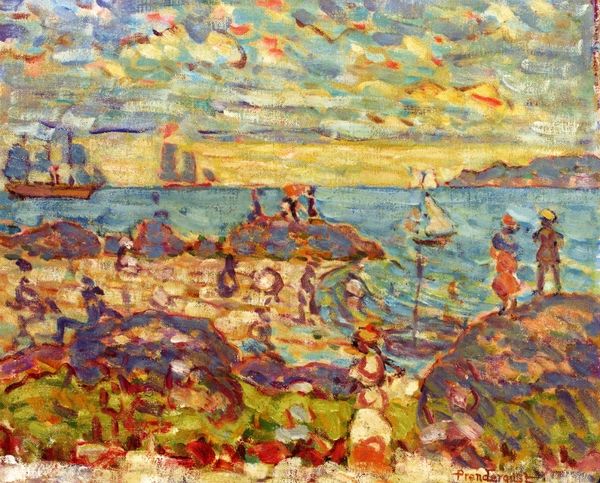
Copyright: Public Domain: Artvee
Editor: So this is "The Beach" by Maurice Prendergast, dating from around 1913 to 1918. It's an oil painting and at first glance, I’m struck by how textured the paint is. What can you tell us about it? Curator: I notice first the way Prendergast builds up the surface. Look at those brushstrokes – they aren't just descriptive, they're almost sculptural. It transforms the beach from a simple location to an actively made, almost crafted, space. This approach, blurring the lines between painting and a kind of applied art, challenges traditional art hierarchies. Consider the social context: industrialization was booming, yet Prendergast returns to scenes of leisure. What's he saying about labor, materiality, and even class here? Editor: I see what you mean. It's like he’s applying labor to depicting leisure! How does his technique relate to the rise of mass production at the time? Curator: Precisely. While factories churned out identical objects, Prendergast emphasizes the handmade quality of his work. Each brushstroke is unique, resisting the anonymity of industrial processes. What's more, think about the pigment itself – ground, mixed, and applied by hand. He’s calling attention to the very stuff that makes the painting possible. Editor: That's fascinating! So, it’s not just a pretty beach scene. He’s making a statement about art-making itself in the face of industrial change. Curator: Exactly. It encourages us to consider the relationship between labor, leisure, and the production of art, inviting discussions about societal shifts occurring in the early 20th century. Editor: I’ll definitely be looking at Impressionist works with a different perspective now. Thank you! Curator: My pleasure. It's all about examining how artists grapple with the material realities surrounding them.
Comments
No comments
Be the first to comment and join the conversation on the ultimate creative platform.
